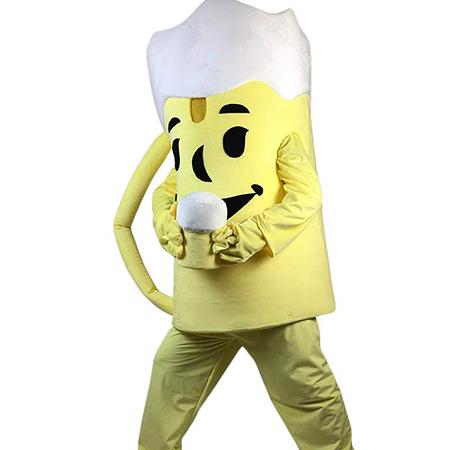Eco-Friendly Materials for Sustainable Mascot Costume Production
In recent years, the demand for sustainable and eco-friendly materials has surged across various industries, including entertainment, sports, and marketing. One notable area where this trend is gaining momentum is in the production of mascot costumes. As mascots play a crucial role in representing brands and organizations, there’s a growing emphasis on creating these iconic outfits with environmentally friendly materials and practices.

Mascot costumes are often used in sports events, corporate settings, and public appearances to engage audiences and create brand recognition. Traditionally, these costumes have been made from conventional fabrics like polyester and nylon, which are derived from petroleum products. However, as awareness of environmental issues rises, the industry is increasingly turning to more sustainable alternatives.
One such material gaining popularity is organic cotton. Grown without harmful pesticides and synthetic fertilizers, organic cotton is not only better for the environment but also healthier for workers involved in its production. Additionally, it offers excellent breathability and comfort, making it suitable for the performers wearing the costumes.

Another promising material is recycled polyester. Derived from post-consumer plastic bottles, recycled polyester significantly reduces waste by repurposing existing plastic into new fabric. This material retains the durability and flexibility needed for mascot costumes while minimizing the costume’s environmental footprint.
Bamboo fabric is also becoming a preferred choice. Bamboo is a fast-growing, renewable resource that requires minimal water and no pesticides to cultivate. It produces a soft, comfortable material that is both biodegradable and antibacterial. These properties make bamboo an excellent candidate for mascot costumes that need to be worn for extended periods.

Hemp, another sustainable option, has been used historically for clothing due to its strength and durability. Hemp grows rapidly without the need for pesticides or herbicides and can be processed into a variety of textiles. Its natural resistance to mold and mildew makes it ideal for long-term use in costumes.
Additionally, innovations in biodegradable synthetics are paving the way for even more eco-friendly mascot costume options. For example, some manufacturers are developing plant-based plastics that break down more easily in the environment compared to traditional petrochemical-based plastics.

The dyeing process is another aspect of costume production where sustainability can be improved. Natural dyes derived from plants, fruits, roots, and bark offer a non-toxic alternative to chemical-based dyes. These natural dyes are less likely to cause water pollution and can produce vibrant, long-lasting colors.
Furthermore, the lifecycle of mascot costumes can be extended through proper maintenance and recycling programs. Organizations can implement protocols for cleaning and repairing costumes to maximize their lifespan. When costumes reach the end of their usable life, recycling initiatives should be considered to prevent them from ending up in landfills.

In conclusion, the shift towards eco-friendly materials for mascot costume production represents a significant step forward in promoting sustainability within the entertainment and marketing sectors. By choosing organic cotton, recycled polyester, bamboo, hemp, and other sustainable materials, coupled with natural dyes and responsible lifecycle management, companies can create mascot costumes that are not only visually appealing but also kind to the planet. This move aligns with broader consumer trends favoring environmentally responsible practices, ultimately contributing to a greener future.

